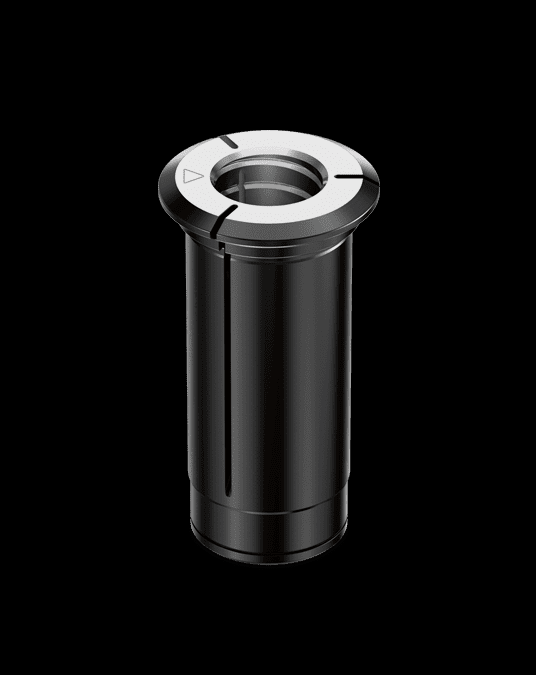From Rene 41, 718 stainless steel and 625 Inconel to titanium and carbon fiber, the materials used in the aerospace and defense industry sector as well as space exploration continue to present significant toolholding challenges.
Magnifying these challenges are complex workpiece geometries with deep cavities, features that require long tool overhangs, and jobs requiring small-diameter cutters. Toolholding is just as important as the machine that runs it, and sub-par tooling can keep a machine from running at its full potential. For these reasons, shops turn to high-quality, precise toolholding.
Because many of these materials are hard on cutting tools, shops constantly strive for the longest possible tool life. For one shop, the simple switch to a high-precision mechanical-type toolholding system skyrocketed its tool life from machining 100 steel parts per cutter up to 700.
Toolholder reduces TIR
When it comes to toolholding, one key to increased cutter life is a holder that provides ultra-low Total Indicated Runout (TIR). The goal is to get as close to zero TIR as possible. With every 0.0001″ of TIR reduction, the company says that tool life can increase by upwards of 50%.
Another example when reduced cutter TIR is required are long tool overhangs to reach complex part features in parts that do not provide much clearance. Shops within the Aerospace, Defense and Space Exploration sectors often run cutters as small as 0.128″ diameter in a CAT 40 machine tool spindles with the tools hanging out up to 8″ from the spindle nose. To achieve TIR of 0.0002″ and under in such overhang applications depends almost entirely on the precision of the toolholder.
Part characteristics and features that involve 5-axis machining, such as those typically associated with 3D metal printed parts, compound the risk of cutter runout and breakage. In the Aerospace, Defense and Space Exploration sectors, 3D metal printed parts made from materials such as 718 Inconel and titanium are commonplace, and some of these parts can take as long as 40 hours to produce. Shops have one chance to machine them correctly, and must use toolholders that not only provide low TIR, but also offer the necessary strength and stability.
Read more: Aerospace and defense materials continue to challenge toolholding





